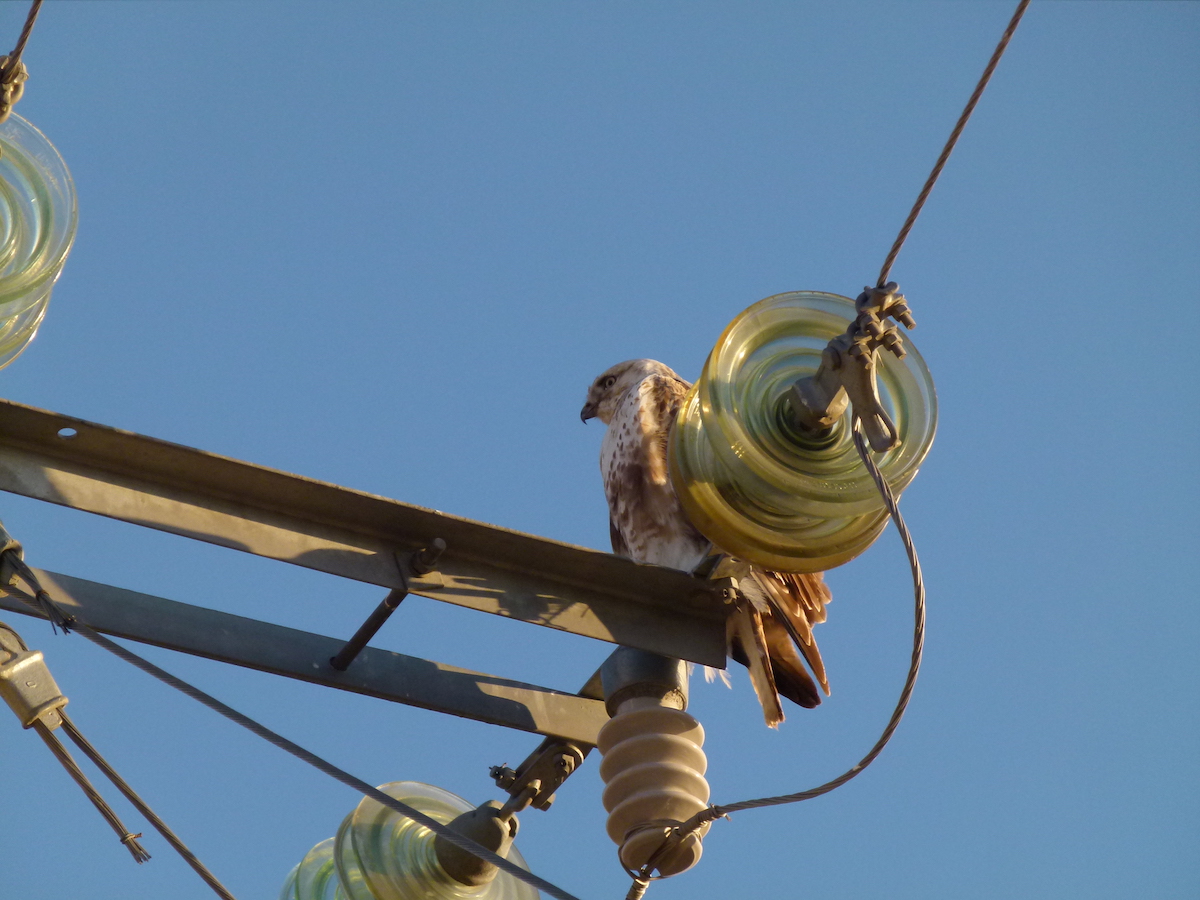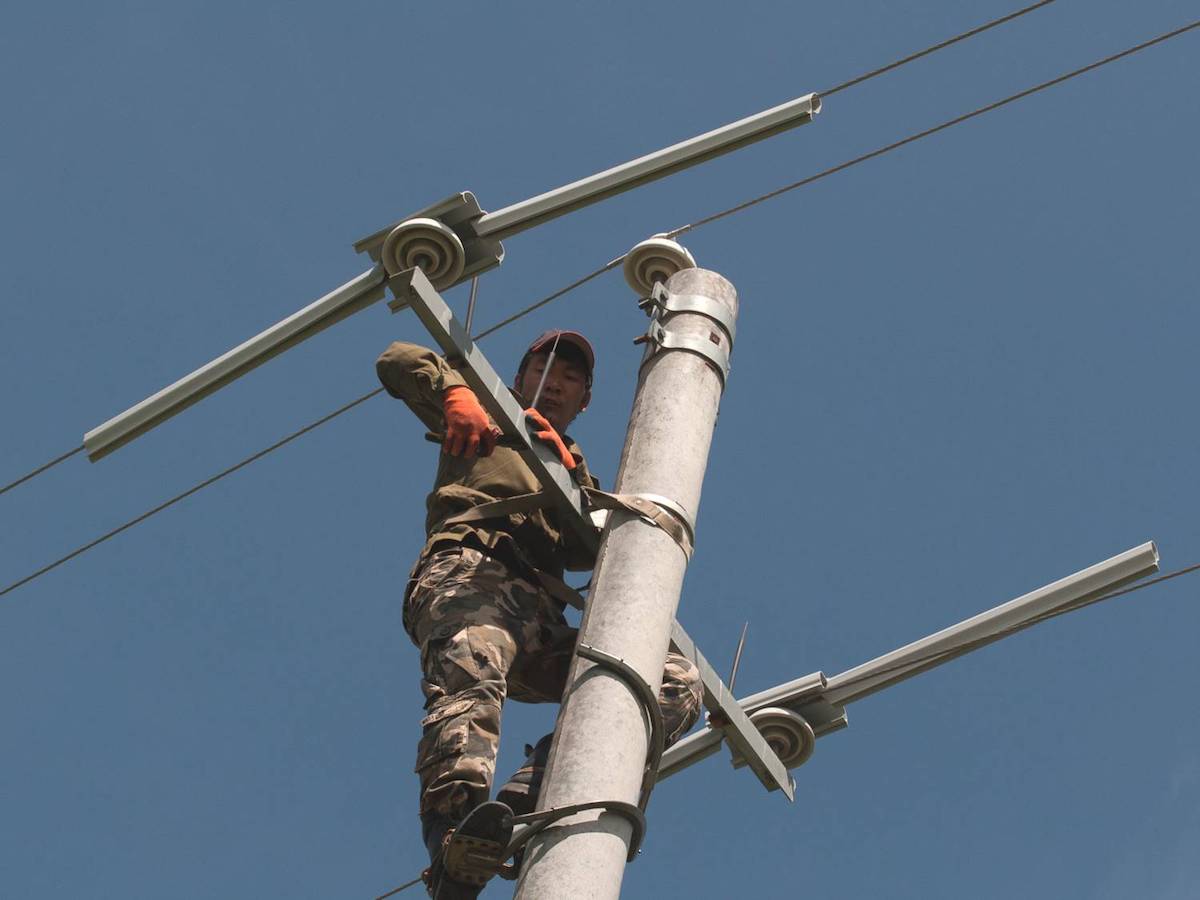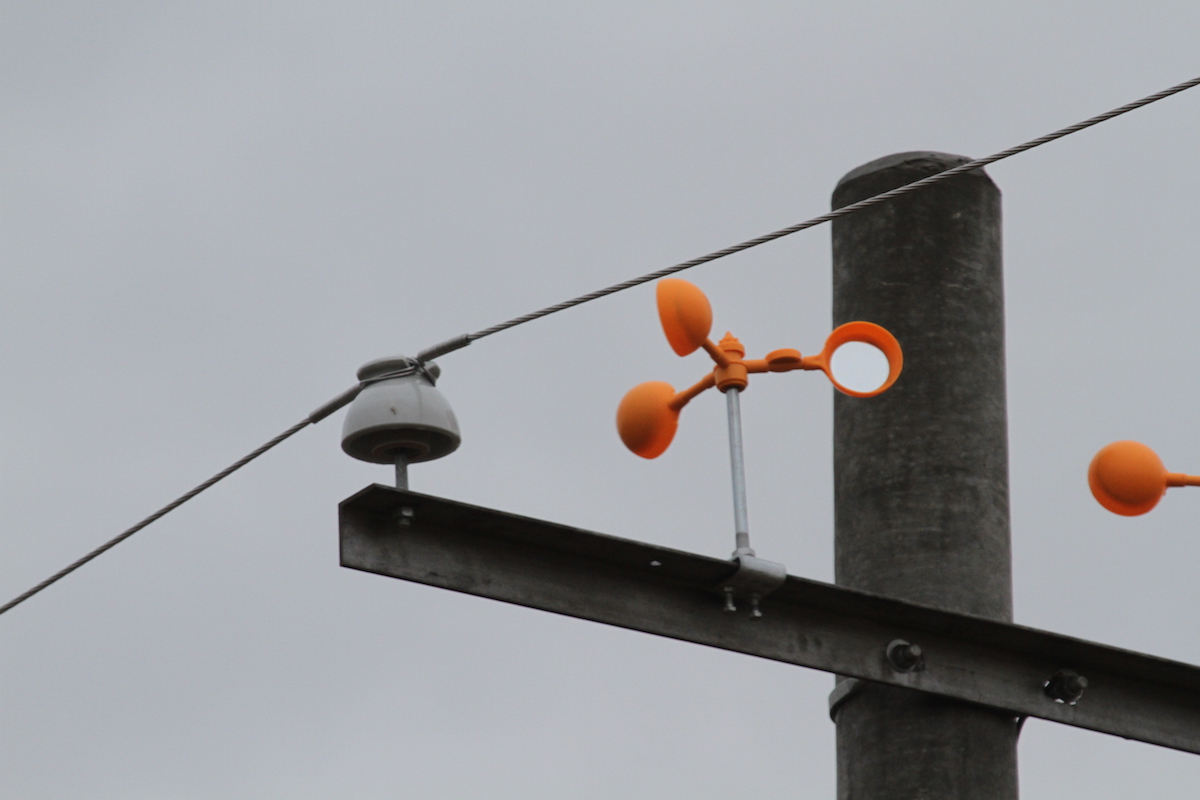Methods for mitigation

Reconfiguration
Simple reconfiguration can take the form of changing jumper wires so that they pass under the crossarm rather than over it, and switching from upright pin insulators to suspended chain insulators.
Reconfiguration is not necessarily a more expensive option as it requires no further maintenance beyond that normally scheduled for the line. Furthermore, there are no additional outage risks that can be associated with retrofitted mitigation such as insulation covers.
However, it must be noted that certain equipment cannot be reconfigured e.g., transformers, regulators and capacitors, which require insulating materials to be used.
Retrofitted mitigation such as insulation covers and perch deflectors are best regarded as temporary until a permanent solution can be installed. Furthermore, there are relatively few studies that quantify the efficiency of retrofitted mitigation measures. Consequently, the best option is to reconfigure the hardware of a power line to a ‘bird safe’ design that minimizes the risk of electrocution.

Insulation
Existing high-risk electricity infrastructure can be retrofitted with insulation materials to prevent bridging between live cables or between cables and grounded hardware.
Insulation can be fitted to conductor wires and insulators supporting the cables or to the grounded crossarms.
Insulating materials need to be of appropriate specification for the voltage and the regional environment of the power line, and must be correctly installed by competent engineers.
Insulation fitted retrospectively requires monitoring and maintenance to ensure that it continues to function effectively.
Perch deterrents and deflectors

Electrocution rates can potentially be reduced by deterring birds from perching in dangerous positions on power distribution lines. Some deterrents, such as rotating mirrors, are aimed at deterring birds from perching nearby, while others, such as spikes, act as physical barriers to prevent birds perching close to live cables.
Deterrent methods can differ in their efficacy, and inappropriate placement may even increase electrocution risk. It is important to ensure that the chosen deterrent or deflector is appropriate for the specific circumstance, is correctly installed, and that a programme of monitoring and maintenance is in place.
